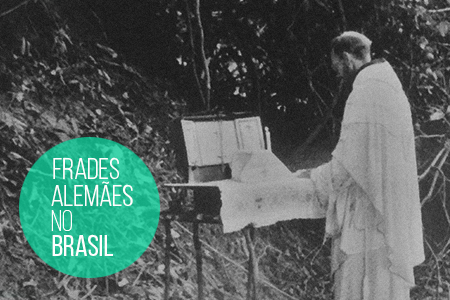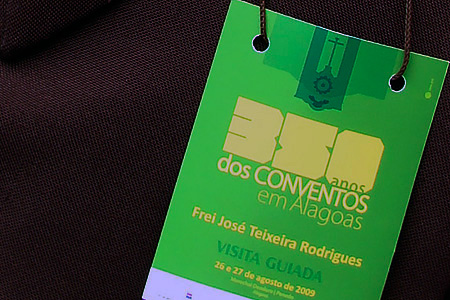As seis linhas de pesquisa do Grupo resultam do descamar das paisagens estudadas em blocos ou porções que contêm, em si mesmas um determinado núcleo de significado.
1. Construção Territorial do Brasil
Investiga as diversas temporalidades das paisagens brasileiras, a partir do confronto das trajetórias de cerca de vinte cidades do Nordeste do Brasil. Linha de partida do Grupo, iniciada em 1998, tem como fundo temporal o período seiscentista, visto o singular e pródigo acervo de imagens, relatos e outras fontes, legado especialmente pela presença holandesa no Brasil colonial. Pauta-se na busca por fontes primárias, nos trabalhos de campo e no material cartográfico manipulado digitalmente. A mais significativa realização dentro desta linha foi a edição do livro “A invenção da cidade”, lançado em 2019.
2. Marcos arquitetônicos
Trata de estruturas edificadas específicas que definem e desenham as paisagens, sejam elas eruditas, vernaculares ou outras. Os projetos desenvolvidos nessa linha visam oferecer subsídios para que tais estruturas, caso sejam pouco conectadas com o cotidiano dos lugares onde se inserem, possam ser requalificadas, de maneira a apresentar um potencial de referência para a vida contemporânea. Trazem assim para a pesquisa, os desafios do reuso e da mutabilidade da arquitetura. Dentro desta linha se enquadram as investigações acerca dos engenhos de açúcar e do franciscanismo, neste caso, abrangendo suas repercussões arquitetônicas por meio da construção de conventos e igrejas nos lugares urbanos, mas também englobando aspectos que trazem desafios aos tempos de hoje: o despojamento frente ao consumo, a simplicidade, o ´vínculo com a natureza e a introspecção que perfazem a sua filosofia e a poética dos seus espaços.
3. Elementos naturais da paisagem edificada
A cidade ressignifica a natureza? Como se posicionar em tempos de busca pela sustentabilidade da casa comum? Assim, no contraponto de tempos e espaços, aborda-se desde a historicidade das apropriações dos diversos componentes da “natureza naturante” no ambiente citadino quanto as suas repercussões nos hábitos e costumes dos que vivem e praticam as paisagens abordadas, nas suas relações cada vez mais necessárias com céus, terras, ambiências, plantas, animais.
4. Gestos na paisagem
Visa repertoriar e aprender com as manifestações dos saberes, associadas à produção e vivência em vários recortes de espaços habitados, em especial os que condensam o tempo. Aborda a paisagem na sua subjetividade, na escala do corpo, individual e coletivo. Observa práticas, celebrações, ritualidades, que podem se efetivar em ações: no plantio, na dança, no brincar, no tecer, no edificar do abrigo, mas também na produção de um relato, no desenho de um mapa, no traçado tangível ou virtual de uma rua ou de um jardim. Aborda temas relativos às formas de expressão e representação dos bens culturais sob o ponto vista social, das sensações e do simbólico. Dentro desta linha, destaca-se o projeto de inventário de manifestações do patrimônio imaterial, realizado em 48 cidades de Alagoas em 2015/2016.
5. Margens
Margem, beira, periferia, borda: aquilo que não é ou não faz parte do centro, o que não está no discurso oficial. O estudo das margens visa olhar justamente para campos invisibilizados, em suas mais diversas esferas e suportes. Abrange as investigações que se relacionam com “o que não é visto”, não porque inexiste no plano material ou sensorial, mas porque é reiteradamente desconsiderado: populações e espaços que inexistem enquanto sujeito coletivo de direitos, perante a Sociedade, o Poder Público, a Universidade. Considerando a cidade como principal locus dessas manifestações, as margens se apresentam como parte integrante, ativa e fundamental das suas dinâmicas. revelando as mais diversas formas de sobrevivência e resistência dentro de uma pauta usualmente pensada de centro para centro.
6. Divulgação do conhecimento e mídias
Unindo os esforços de todas as linhas em que o Grupo atua e ao mesmo tempo buscando aprofundar as reflexões colocadas pelo próprio campo do design e das mídias, busca-se explorar os resultados de pesquisa visando sua socialização e divulgação. Estas metas são entendidas para além de um compartilhar de saberes buscando incluir a sua co-produção por parte de quem os acessa. Cruzando manualidades e o digital o Grupo tem produzido vídeos, instalações, livros, etc. Nesta linha, insere-se primordialmente a atividade do Taba-êtê, destacando-se as exposições “É dubanguê” em 2017 e “Taba-êtê: desvelando Brasis” em 2019.
The six lines of research of the Group result from the peeling of the studied landscapes into blocks or portions that contain, in themselves, a certain core of meaning.
1 – Territorial Construction of Brazil
It investigates the diverse temporalities of the Brazilian landscapes, from the confrontation of the trajectories of about twenty cities of the Northeast of Brazil. The starting line of the Group, which began in 1998, has as its temporal background the sixteenth century, given the singular and prodigious collection of images, accounts and other sources, a legacy especially from the Dutch presence in colonial Brazil. It is based on the search for primary sources, fieldwork and digitally manipulated cartographic material. The most significant accomplishment within this line was the edition of the book “The invention of the city”, launched in 2019.
2. Architectural landmarks
It deals with specific built structures that define and design landscapes, be they erudite, vernacular or other. The projects developed in this line aim to offer subsidies so that such structures, if they are little connected with the daily life of the places where they are inserted, can be requalified, in order to present a potential of reference for contemporary life. They bring to the research, the challenges of reuse and the mutability of architecture. Within this line are the investigations about sugar mills and Franciscanism, in this case, covering their architectural repercussions through the construction of convents and churches in urban places, but also encompassing aspects that bring challenges to today’s times: the stripping of consumption, simplicity, the ‘link with nature and introspection that make up its philosophy and the poetics of its spaces.
3 – Natural elements of the built landscape
Does the city resignify nature? How to position yourself in times of search for the sustainability of the common house? Thus, in the counterpoint of times and spaces, it is approached from the historicity of the appropriations of the various components of “nature naturante” in the city environment as its repercussions on the habits and customs of those who live and practice the landscapes addressed, in their increasingly necessary relationships with skies, land, ambience, plants, animals.
4 – Gestures in the landscape
It aims to repertorize and learn from the manifestations of knowledge associated with the production and living in various cutouts of inhabited spaces, especially those that condense time. It approaches the landscape in its subjectivity, in the scale of the body, individual and collective. It observes practices, celebrations, rituals, which can be effective in actions: in planting, in dancing, in playing, in weaving, in building the shelter, but also in the production of an account, in the drawing of a map, in the tangible or virtual tracing of a street or a garden. It deals with themes related to the forms of expression and representation of cultural goods from the social point of view, the sensations and the symbolic. Within this line, it highlights the project of inventory of manifestations of intangible heritage, held in 48 cities of Alagoas in 2015/2016.
5 – Margins
Margin, edge, periphery: that which is not or is not part of the center, that which is not in the official discourse. The study of the margins aims to look precisely at invisible fields, in their most diverse spheres and supports. It encompasses investigations that relate to “what is not seen”, not because it does not exist on a material or sensory level, but because it is repeatedly disregarded: populations and spaces that do not exist as a collective subject of rights, before Society, Public Power, the University. Considering the city as the main locus of these manifestations, the margins are presented as an integral, active and fundamental part of its dynamics. revealing the most diverse forms of survival and resistance within an agenda usually thought of from center to center.
6 – Dissemination of knowledge and media
Uniting the efforts of all the lines in which the Group operates and at the same time seeking to deepen the reflections placed by the field of design and media, it seeks to explore the results of research aimed at its socialization and dissemination. These goals are understood beyond a sharing of knowledge seeking to include their co-production by those who access them. Crossing manualities and digital, the Group has produced videos, installations, books, etc. In this line, the activity of Taba-êtê is included primarily, highlighting the exhibitions “É dubanguê” in 2017 and “Taba-êtê: desvelando Brasis” in 2019.





















